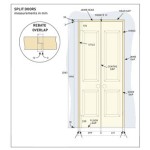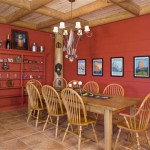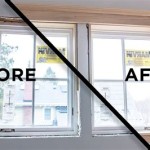How To Work Out Your Interior Design Style
Developing your interior design style is a thrilling journey of self-discovery that culminates in creating a home that truly reflects your personality and preferences. While trends come and go, your personal style remains constant, guiding your choices and ensuring a space that feels uniquely yours. This article will delve into the process of identifying your interior design style, outlining key steps and considerations to embark on this exciting endeavor.
Reflect on Your Preferences
The foundation of any design journey lies in understanding your own aesthetic sensibilities. Consider your existing home décor, noticing the colors, patterns, textures, and shapes that instinctively appeal to you. Are you drawn to minimalist spaces with clean lines and neutral palettes, or do you prefer vibrant splashes of color and eclectic mixes of textures? Examine the art you admire, the fashion you gravitate towards, and the spaces that inspire you.
Take note of specific elements that evoke positive reactions. Do you find yourself drawn to natural materials like wood and stone? Are you captivated by intricate patterns and bold textures? Do you crave a sense of calmness and serenity, or do you desire a vibrant and stimulating atmosphere?
Reflecting on these preferences provides valuable clues about your design inclinations, paving the way for a more focused exploration of different styles.
Explore Different Interior Design Styles
The world of interior design offers a vast array of styles, each with its distinct characteristics and influences. Familiarizing yourself with these styles is crucial to discerning which resonates most with your preferences.
Some popular styles include:
- Modern: Known for its clean lines, geometric shapes, and neutral color palettes. Often incorporates minimalist furnishings and a focus on functionality.
- Contemporary: Similar to modern but with a focus on current trends. Embraces bold colors, eclectic textures, and cutting-edge designs.
- Mid-Century Modern: Celebrates the design aesthetics of the 1950s and 1960s, featuring organic shapes, warm woods, and vibrant pops of color.
- Scandinavian: Emphasizes simplicity, functionality, and natural materials, often with a focus on light and airy spaces.
- Industrial: Characterized by raw materials, exposed brick, metal accents, and a vintage aesthetic. Often features recycled materials and a focus on functionality.
- Bohemian: Embraces eclecticism, layering textures, colors, and patterns. Often features global textiles, vintage finds, and a relaxed atmosphere.
- Traditional: Rooted in classic design principles, featuring elegant furnishings, ornate details, and a sense of timelessness.
- French Country: Characterized by rustic charm, natural materials, and a focus on comfort and warmth.
- Coastal: Inspired by seaside living, featuring light and airy spaces, natural materials, and a relaxed atmosphere.
Explore online resources, design magazines, and Pinterest boards to gain a deeper understanding of these styles. Observe the defining elements, color palettes, furniture choices, and overall ambiance associated with each. Pay attention to which styles resonate with you on a deeper level, sparking a sense of familiarity and inspiration.
Create a Mood Board
A mood board is a valuable tool for visualizing your desired aesthetic and refining your design direction. Gather images, fabric swatches, paint samples, and other visual inspiration that speaks to your identified style preferences. You can create a physical mood board using a cork board, a scrapbook, or a poster board. Alternatively, digital mood boards can be created using platforms like Pinterest or Canva.
As you curate your mood board, pay attention to the recurring themes and elements. Are you drawn to a specific color palette? Are you using textures like wood, metal, or textiles? Are there particular shapes and forms that consistently appear? Reflecting on these patterns will provide further clarity about your design style.
The mood board serves as a visual representation of your aesthetic vision, acting as a constant reference point as you navigate the design process.

Dear Urbaneer How Do We Establish Our Interior Design Style

Interior Design Styles 101 The Ultimate Guide To Decorating In 2024 Decorilla

Why Is It Important To Determine Your Design Style Cristina Isabel

What S My Design Style Here How To Figure It Out Interior Styles House Decorating

How To Find Your Decorating Style Rehome Interior

Style Inspiration 9 Fun Quizzes To Find Your Home Design Interior Styles Quiz Decorating

Finding Your Interior Design Style In 2024 The Original Chair Company

A Guide To Discovering Your Unique Home Design Style Zevy Joy

Interior Design Styles 101 The Ultimate Guide To Decorating In 2024 Decorilla

How To Determine Your Design Style Clary Sage College
Related Posts








